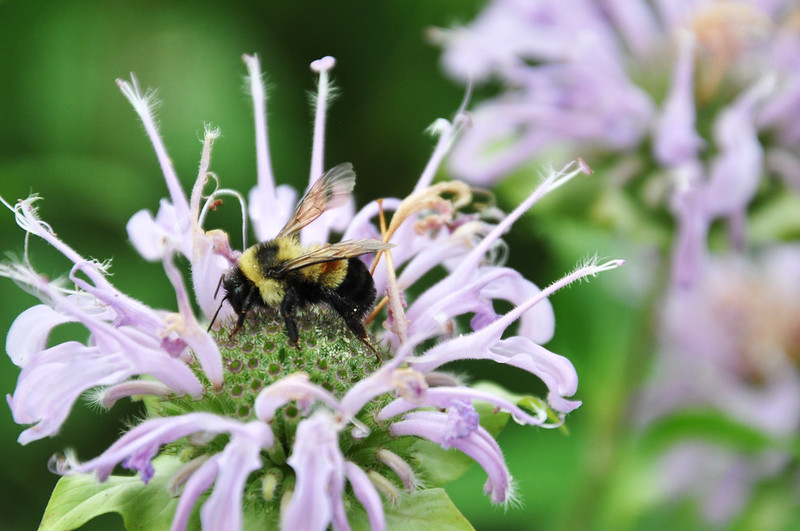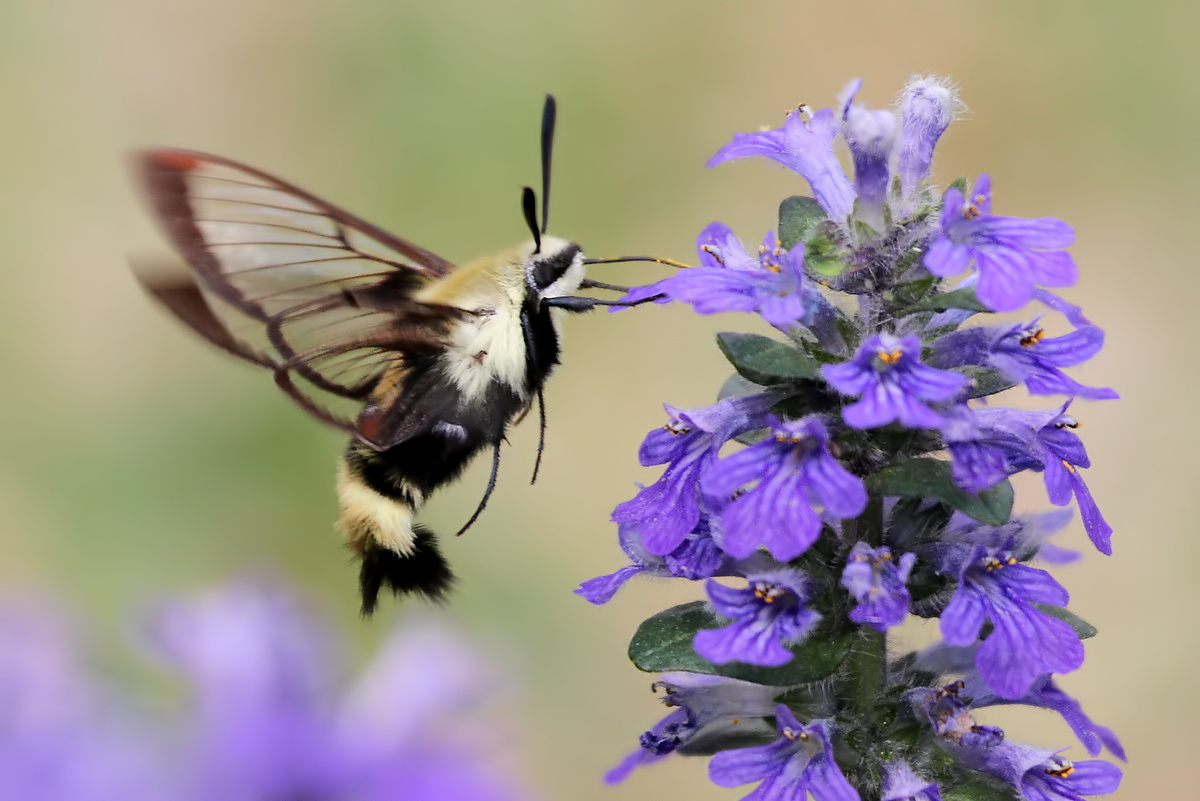Have you ever wondered why bees or butterflies flock to certain flowers, while completely ignoring others?
How do our flying pollinator friends decide what plants to feast upon, and which to flutter past?
Plants depend on the work of pollinators in order to successfully reproduce, and insects need pollen and nectar from plants as a source of food. Plants and pollinators have co-evolved together over time, which allows them to interact in a mutually beneficial way. The term “pollinator syndrome” describes plant characteristics that may appeal to a specific type of pollinator, including color, scent, flower shape, and more.
Bees see the world around us differently than we do, as the spectrum of light visible to humans is different from that of insects. While humans have the capability to see the spectrum from red to violet, bees can’t see the color red, but they can see more of the ultraviolet spectrum than us. And did I mention that most bees have five eyes?! They have two large compound eyes and three smaller eyes, which are also called “ocelli”. The large, compound eyes are composed of thousands of tiny lenses that allow bees to see color, movement, and patterns. The ocelli are simple eyes with only one lens. These simple eyes don’t allow bees to see complex images, but instead allow bees to detect the direction and intensity of light, which helps with navigation. Bees are also great at differentiating between light and dark, which helps them find the edges of flowers and plants.
Bees look for flowers that have brightly colored petals, have a sweet or minty fragrance, are symmetrical, bloom in the daytime, and offer lots of pollen and nectar to feed on. Bees like flowers that provide landing platforms and flowers with a tubular shape that hold nectar at the base. Bees also look for “nectar guides” in flowers. Some flowers feature designs on their petals that guide bees to their centers where they can find nectar and pollen. Others feature a difference in ultraviolet reflectance near the center of each petal which is invisible to humans, but creates a strong contrast that draws bees right to the source of nectar!
Indiana is home to more than 430 native bee species, but our populations of native bees are declining due to habitat loss and other stressors. The rusty-patched bumble bee, which is native to Indiana, was the first bee listed under the Endangered Species Act in 2017. The fate of humankind is closely tied to the fate of bees, as nearly 75% of staple food crops that feed us, and 80% of flowering plants rely on animal pollinators like bees. We can support our bee populations by providing them with diverse forms of food and habitat.
Our native bees have co-evolved with native plants throughout history, and by adding native flowers to our gardens and landscapes, we can provide a reliable source of nutritious food for our flying friends. Planting a variety of natives that offer blooms from early spring through late fall ensures that bees have something to eat all year. Although it’s tempting to cut back our gardens in autumn as our plants begin to brown and wither, waiting to clean up our gardens until May provides critical shelter and nesting habitat for bees and other insects. (Bonus: Leaving seed heads on your spent flowers through the fall and winter also provides a snack for birds!)
If you’re looking to attract more bees and pollinators to your garden, here are a handful of amazing native plants we recommend:
- Rudbeckia genus:
- Black-eyed Susan (Rudbeckia hirta)
- Brown-eyed Susan (Rudbeckia triloba)
- Coreopsis genus:
- Tall coreopsis (Coreopsis tripteris)
- Lanceleaf coreopsis (Coreopsis lanceolata)
- Symphyotrichum genus:
- New England aster (Symphyotrichum novae-angliae)
- Blue wood aster (Symphyotrichum cordifolium)
- Smooth aster (Symphyotrichum laeve)
- Monarda genus:
- Wild bergamot or Bee balm (Monarda fistulosa)
- Solidago genus:
- Zigzag goldenrod (Solidago flexicaulis)
- Blue-stemmed goldenrod (Solidago caesia)
To learn more about native plants and where to find them, visit IndianaNativePlants.org.
To learn about transforming your garden or outdoor space into a wildlife habit, explore Growing Home™, Red-tail’s award-winning habitat certification program.
Photo: Rusty-patched bumblebee on wild bergamot, credit: USFWS Midwest Region
JoAnna Darda is Red-tail’s Outreach Coordinator. She is passionate about nature, art, and Muncie’s enthusiastic and engaged community.




